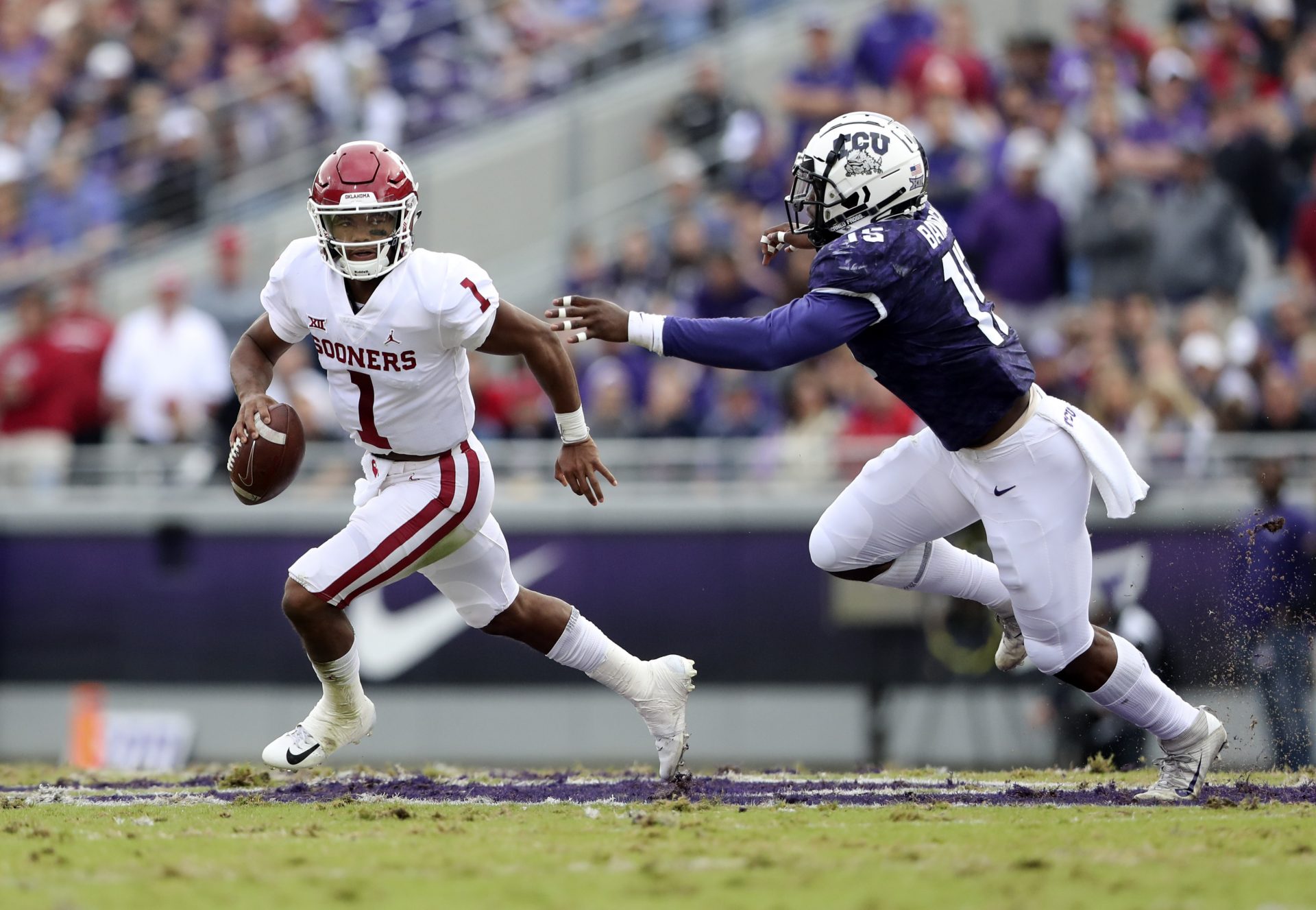If you’ve watched any football, you’ve probably heard the term “dual-threat quarterback.” While it’s a term thrown around a lot, many don’t know what it means, or how exactly they are different from the typical pro-style quarterback, and why football teams at both the pro and college level value them more and more.

Understanding Dual-Threat QBs in College Football: Definition, Rise, and Impact on Modern Offenses
“Dual Threat QB” doesn’t exactly have a dictionary definition, but it can be understood as a quarterback who is as good at running the football as he is at throwing it. This differs from the typical “pro-style” QB, who stays in the pocket and makes big-time throws from where he stands.
When football started to rise in the 1950s, the quarterback had one job and one job only: Throw the football. As time passed and offenses became more complex, quarterbacks began to run more and more.
Back in 2013, SB Nation writer Robert Weintraub wrote a piece where he dubbed Reggie Collier as “The Original Dual-Threat.”
Collier was the quarterback for Southern Mississippi from 1979-1983. In his three seasons as the Golden Eagles’ starter, Collier ran for a whopping 2,304 yards, showing how a quarterback could be an effective weapon on the ground.
Collier’s success paved the way for future dual-threat quarterbacks to emerge, and it started becoming more common in the 1990s.
In that decade, eight college quarterbacks ran for over 500 yards in a single season: Virginia’s Shawn Moore, Florida State’s Charlie Ward, Colorado’s Kordell Stewart, Alcorn State’s Steve McNair, Nebraska’s Charlie Frazier, Georgia Tech’s Joe Hamilton, Kansas State’s Michael Bishop, and Virginia Tech’s Michael Vick.
After the 1990s, dual-threat quarterbacks were a common sight. Fast-forward to the 2000s, when players like Tim Tebow and Cam Newton took the college football world by storm.
In 2007, Tebow threw for 3,286 yards and 32 touchdowns while running for an additional 895 yards and 23 touchdowns en route to a Heisman trophy. Then in 2010, Newton threw for 2,854 yards while running for 1,473 yards and 20 more TDs, also winning the Heisman.
Players like Tebow and Newton redefined modern offenses. Coaches realized that having a dual-threat quarterback makes your offense more dynamic and opens up many different possibilities. The dual-threat quarterback became all the rage and was becoming more valued than the typical pro-style quarterback.
KEEP READING: Why College Coaches Push for Early Enrollees and What It Means for Recruits
Looking at the 14 Heisman winners since Newton in 2010, Robert Griffin III, Johnny Manziel, Marcus Mariota, Lamar Jackson, Kyler Murray, and Jayden Daniels were all dual-threat QBs.
Jayden Daniels, Johnny Manziel, Kyler Murray, and Lamar Jackson all had seasons where they threw for over 3,000 yards and rushed for over 1,000.
Now, it’s almost weird to see a college football offense without a dual-threat quarterback. The ability to throw and run, especially at the college level, is essential to being a good quarterback today. This trend should only grow as great athletes continue to opt to play the quarterback position.
College Sports Network has you covered with the latest news, analysis, insights, and trending stories in football, men’s basketball, women’s basketball, and baseball!

